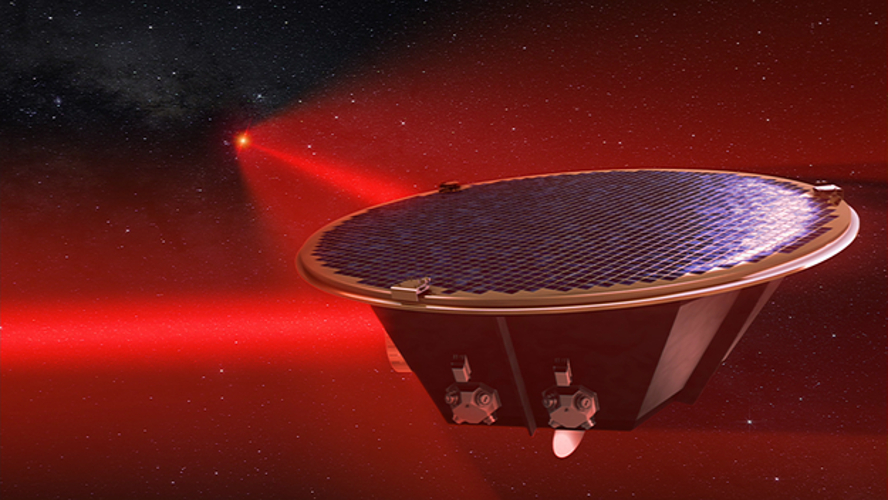
 Credit: ESA
Credit: ESA
LISA & the Wiggling Universe
The Universe is mostly studied by measuring the amount and type of radiation emitted by massive objects in space. But the Universe can also be studied by the "gravitational radiation", or "gravitational waves" that objects emit. Gravitational waves were predicted by Einstein and are caused by the acceleration of massive bodies, similar to the way that electromagnetic waves are produced by the acceleration of electrically charged bodies. But gravitational waves are waves in the ocean of spacetime itself, stretching and compressing both space and time as they pass by. The recent spectacular detections of gravitational waves by LIGO, and the smashing success of the LISA Pathfinder mission have accelerated interest in a space-based gravitational wave detector. The
Laser Interferometry Space Antenna mission, or LISA, is currently under development by the European Space Agency and NASA. LISA consists of 3 spacecraft flying in a triangular formation, each separated by 2.5 million kilometers, following the earth in its orbit around the sun. Gravitational waves that pass by earth will change the distances between the spacecraft, and let astronomers measure the strength and direction of the source of the gravitational radiation. The picture above shows one of the LISA spacecraft, connected to its two partner ships by laser beams which are used to measure precisely the separations of the spaceships. LISA is currently expected to launch in the 2030's.
Published: June 1, 2021
<
HEA Dictionary ● Archive
● Search HEAPOW
● Other Languages
● HEAPOW on Facebook
● Download all Images
● Education ● HEAD
>

Each week the HEASARC
brings you new, exciting and beautiful images from X-ray and Gamma ray
astronomy. Check back each week and be sure to check out the HEAPOW archive!
Page Author: Dr. Michael F. Corcoran
Last modified Tuesday, 27-Feb-2024 10:13:27 EST


